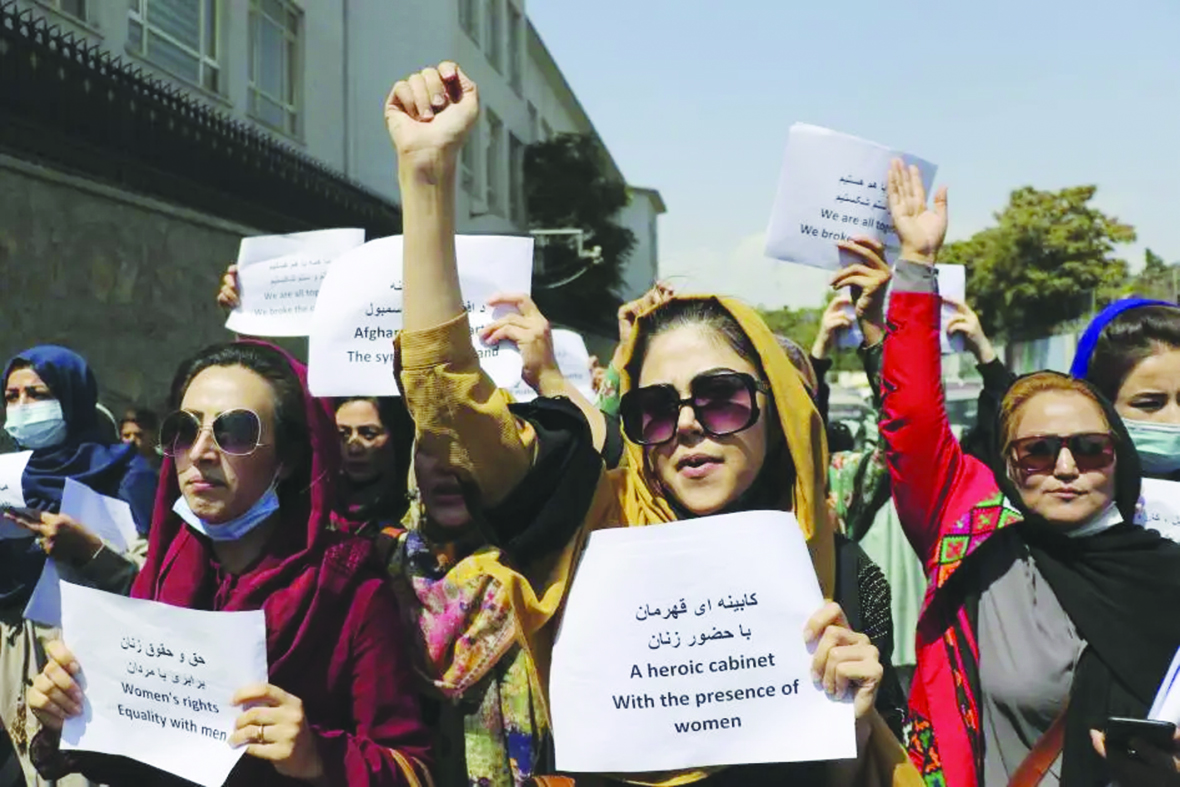Afghanistan is a landlocked nation with approximately 30 million inhabitants, primarily Pashtuns, Tajiks, Hazaras, and Uzbeks. It lies tucked between the Middle East, Central Asia, and South Asia.
The invasion of Afghanistan by the USSR in 1979 was followed by a “Mujahedeen” uprising. After the USSR was defeated and its forces withdrew, the Taliban gained substantial influence and enjoyed impunity in imposing Sharia law throughout the country. By the end of the 1990s, the Mujahedeen government was replaced by the Taliban. Essential services and access to necessities were reduced while they were in power. Women became the most targeted community and experienced marginalization and oppression.
The Taliban administration was overthrown by Western coalition forces after the assaults on the World Trade Center in New York on 11 September 2001, and the Taliban withdrew to rural areas. Following two decades of occupation, the USA-led military withdrew from Afghanistan on 30 August 2021, and the Taliban once again seized power. This has raised concerns about the rise of an authoritarian regime that women fell prime victim in the oppressive society under Taliban.
One of the harshest regulations enforced by the Taliban is the ban on women attending education institutions. The right to education has been taken away from over a million young women by the shutdown of secondary schools for females. The Taliban has defended this prohibition, which includes colleges and vocational training centres, by claiming that it is against Sharia law. In addition to being a violation of fundamental human rights, this denial of facility possibilities is a serious setback to the nation’s economic future.
UNICEF estimates that the prohibition on girls attending school has cost Afghanistan more than $500 million only this past year. These school closures have a wide range of effects. Since they can now only teach at the primary level, thousands of female teachers have lost their jobs. According to reports in the Afghan media, over 14,000 government positions occupied by female teachers have been abolished, making it more difficult financially for several people. Many women are in desperate situations, experiencing extreme psychological stress as a result of their inability to work and support their families. According to one publication, 47 percent of women reported having considerable psychological discomfort.
The war has significantly reduced the availability of health services, particularly mental health treatments, in Afghanistan. In addition to acute trauma, Afghan women also face interpersonal violence and patriarchal attitudes in their society. Women may face further oppression in their pursuit of education, skill development, and property inheritance if they continue to adhere to traditional lifestyles and practices including early marriage, and adolescent pregnancy. The way the traditional court system functions, the lack of access to legal counsel and assistance, and the irregular and unpredictable changes in governmental rules and regulations all contribute to the oppression of women.
Under the Taliban government, two Afghan women are losing basic rights: school attendance is prohibited for girls, wearing the burqa is mandatory, long-distance travel is prohibited, and access to public amenities is restricted. The future of Afghanistan rests on the empowerment of its women. For the stability and development of the nation, their work, education, and general well-being are crucial. It is the duty of the international community to uphold the rights of Afghan women and to hold the Taliban responsible for their deeds.
The predicament of Afghan women continues to serve as a powerful reminder to the world community of the value of human rights and the necessity of international solidarity in the face of injustice. Although there will be many obstacles in the way, there is hope for a better future for Afghan women if activism and support don’t stop.
The Taliban has issued numerous decrees that severely restrict women and girls from exercising their basic rights, including liberty, work, and education. Those who protest against these oppressive measures face torture. Despite women’s lack of voting rights and the non-implementation of a 1919 law intended to raise the marriage age from 18 to 21 years, child marriages and rape cases continue to be commonplace. Strict dress standards apply to women, and they are not allowed to roam freely in public without a male partner. The Ministry of Women’s Affairs was abolished, leaving women without any formal defence against oppression and violence. Moreover, the area has high rates of maternal and newborn mortality, and women are not allowed to participate in politics. Many female activists have moved to neighbouring countries because of the difficult conditions, fearing for their safety.
The systematic subjugation by the Taliban is terrible for Afghan women and girls in general, not just the younger generation. It will also do irreversible harm to Afghans in the future if left uncontrolled. Boys who grow up in an environment that normalizes the dehumanization of women and girls may treat women poorly. They are also more susceptible to radicalization, which could plant the seeds for security issues that go beyond Afghanistan’s boundaries.
The future of Afghanistan rests on the





